This is the third part of the series unethical animal tourism and what to do instead. In this post, we will focus on marine life.
There are plenty of activities that are obviously unethical, like performing dolphins and killer whales.
Isn’t it questionable that creatures that swim hundreds of kilometers a day in the wild are held in tiny pools to do tricks for our amusement? Do we even ask us this question before going to these attractions?
While some marine life attractions are easy to spot as unethical, others are not. And some might seem harmless until you look at the effects tourism has on the surroundings.
Let me tell you a story
A couple of years ago, I had the most magical experience in my life. I dived with Thresher sharks in the Philippines. The experience was great, we were only four of us on the boat plus our divemaster. There were a few other boats out the same morning, but nowhere near us.
We dove down to 30 meters and sat along the wall of a sunken island where the Thresher sharks come in the early morning. It was magical. The beauty of the long-tailed sharks mesmerized me and I could have stayed there forever – if it wasn’t for the fact that the air in my tank would have run out at some point.
Recently, I came across an article that talked about the increase of dive tourism to this place, and corals are being unknowingly destroyed by divers. With the excitement of seeing these incredible creatures, it is easy not to realize you kick your fins on the corals.
Now, let me explain how this affects the Thresher shark directly. The reason they come up from hundreds of meters below sea level is to get cleaned. Small fish called Cleaner Wrasse eat parasites and the dead skin of the sharks.
These tiny fish live in the corals divers are destroying when observing the Thresher sharks. If their homes disappear, the Cleaner Wrasse will disappear. Then, where will the Thresher sharks go to get cleaned?
This shows the importance of choosing responsible dive centers and always being aware of your actions even in a moment of total excitement.
I can only speak for myself, but I forgot the entire world around me when I laid eyes on my first Thresher shark. I have never seen anything so beautiful in my life!
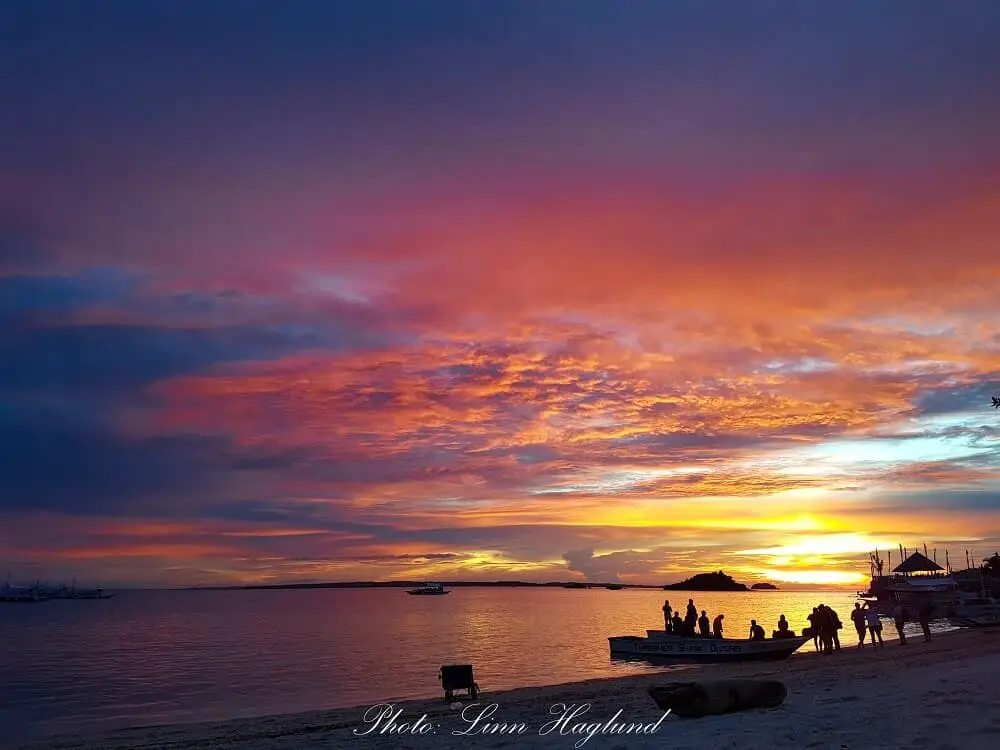
You might also like: Unethical animal tourism and what to do instead: Animal rides
Unethical animal tourism and what to do instead – marine life
As you can see, there are activities that seem harmless at first glance, but then there are side effects of large numbers of tourists that directly affect the wildlife that we should be aware of.
It really isn’t always easy to spot up front. That’s why it’s important to talk about it if you experience that an activity wasn’t as ethical as you thought in the first place. This way, you can help other travelers in taking better choices in the future.
I have partnered up with a number of responsible travel bloggers to share their experiences with unethical animal tourism involving marine life and what they recommend doing instead.
Swimming with dolphins in Cuba
By Claudia from My Adventures Across The World
It was February 2013 and I was traveling around Cuba with my sister. We were exploring Parque Baconao, near Santiago de Cuba, when our driver suggested to take us to a dolphinarium. As if watching a dolphin show was not bad enough, when one of the workers approached us to ask us if we’d like to swim with the dolphins for a small fee, we eagerly agreed.
We honestly had fun there and then, but it soon dawned on us that those animals would have been better off free in their natural environment, rather than living in a small pool where they’d probably get sunburnt (the water in pools is hardly deep enough for dolphins to be able to protect their skin by swimming in the deepest parts to avoid sun rays) and get starved and punished until they learned to do those tricks.
Since then, I have done my best to become a more responsible traveler, trying to spread awareness on the use of animals in tourist attractions, and trying to show other travelers that there are ways to interact with animals that are fun and way more ethical and sustainable.
Ethical ways to see dolphins
The best way to see dolphins is in their natural environment, and there are plenty of places around the world to do that. If you are traveling to Argentina, head to Puerto Madryn (from where you’ll be able to visit Peninsula Valdes and Punta Tombo, a famous penguin colony) and join a boat tour. Dolphins usually enjoy following the boat! The same happens in Peru’s Paracas Natural Reserve.
And if you are living in Europe, you actually don’t have to travel far. You can easily see dolphins around Sardinia, where they even enjoy swimming and playing in Poetto Beach – Cagliari’s main urban beach. There, they can be seen throughout the year, often interacting with people swimming or even with windsurfers.
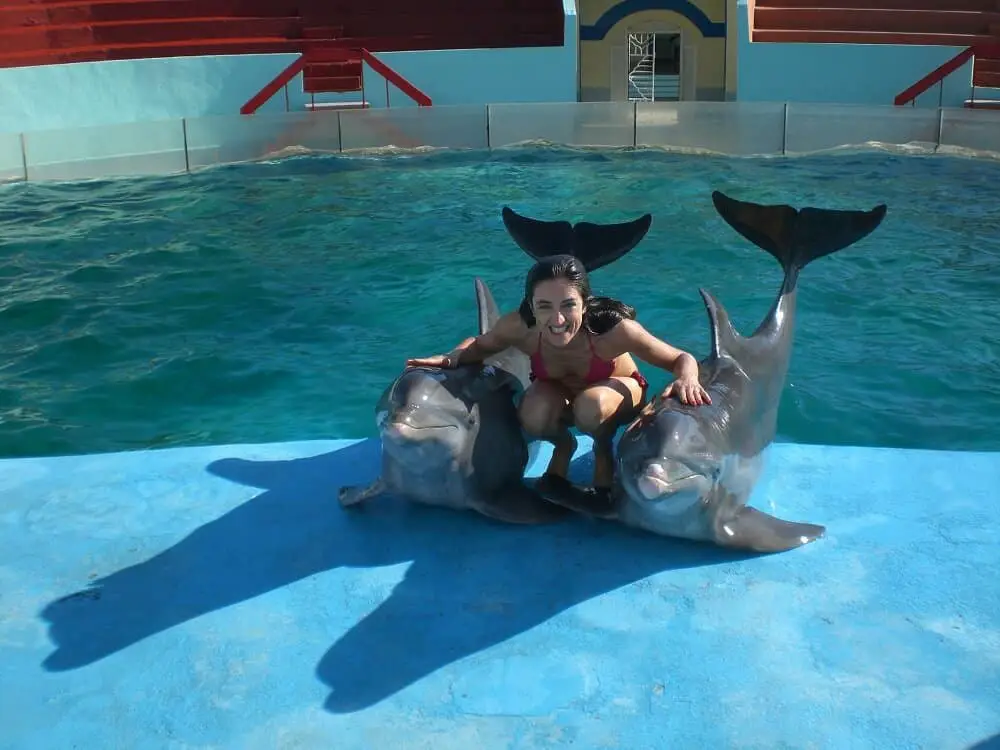
Feeding tiger sharks in the Maldives
By Steffi from Beach Bum Adventure
This year in the Maldives, I went scuba diving off an incredible island called Fuvahmulah. While there we were very excited to see a whole range of different marine life, including oceanic mantas, whale sharks, thresher sharks, and tiger sharks.
The main draw for this island is a dive site called “Tiger Shark Zoo”. Just at the edge of the harbor, the dive boats will dump dead fish into the water to attract the tiger sharks.
After waiting around 5 minutes, the divers jump and drift into the dive site to experience scuba diving with tiger sharks.
I was in complete awe of seeing the tiger sharks, their markings and size (approximately 3 meters) were so impressive and I’m glad I got to see them. I only wish I had not been part of the feeding activity.
Feeding marine life interrupts their natural hunting patterns and is not ethical. It can encourage sharks to associate humans with food and also risks making them dependent on humans.
Ethical ways to see tiger sharks
In this area of the Maldives, we can regularly see tiger sharks at other dive sites and therefore I wish I had not participated in a dive in which tiger sharks are fed and instead seen them in a more natural environment at an alternative dive site.
We spoke to other divers who had seen tigers on a reef dive and I wish we had done this instead so now I want to tell others about the tiger shark feeding so that they can make an informed decision if they wish to participate or see them truly wild.
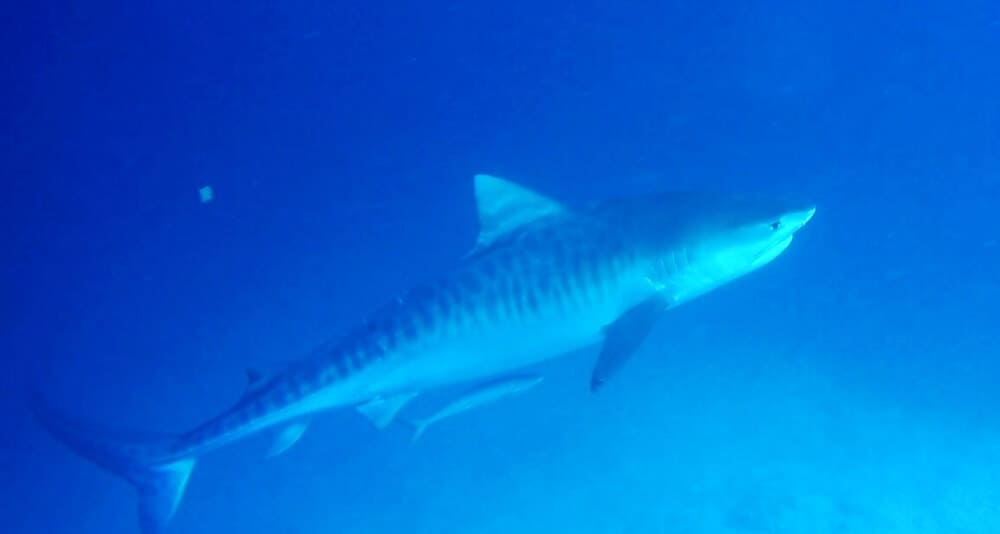
Hatching sea turtles in Hikkaduwa Sri Lanka
By Ed and Jennifer from Coleman Concierge
Let me tell you two stories about turtle tourism that are worlds apart. There’s the one time we went to the turtle hatcheries of Hikkaduwa Sri Lanka and another time we watched a natural turtle hatch in Fort Lauderdale.
Hikkaduwa was our first wild turtle experience. Well, sort of wild. Don’t get me wrong, there were some great things to do in Hikkaduwa, but the turtle encounter left us feeling really meh.
First off, the entire hatchery smelled like fish. The eggs were collected for a bounty and brought to the center where they hatched. Then the hatchlings were placed into tanks for three days until release.
This practice might actually increase the turtle population, but there was no magic, and it didn’t seem ethical. The guide picked up a hatchling and passed it around the group and offered photo ops holding adult turtles. Did he not know people can pass diseases to turtles by handling them and how much stress that causes? It all felt wrong and icky.
Ethical ways to see baby sea turtles
Our next experience was so much better. We heard of a group, Sea Turtle Oversight Protection (STOP), in Fort Lauderdale, Florida that did things differently. If you don’t know, south Florida and Oman are the two most significant loggerhead turtle nestings grounds in the world. Almost half of the loggerhead turtles born come from those two places.
If you’ve ever seen the bright lights of Fort Lauderdale, you could imagine the issues with natural hatches. The babies often get confused and head towards certain death on highway A1A instead of the open ocean. STOP recognized this issue and took action.
They obtained permits and recruited volunteers to monitor every at-risk nest all summer long. Then they started offering turtle treks to fund the program and raise awareness. They allow the turtles to hatch naturally and record data on their path to the ocean. Some babies make it all on their own for their swim to the Sargassum Sea.
The ones who get confused by the lights get placed into a bucket lined with cool, wet sand. Immediately after the hatch completes, the volunteers take the newborn babies to the shore for release. They emphasize how these little guys have to swim seven miles out to the Gulf Stream Current that takes them to the Sargassum Sea. They only have a small energy reserve to make this long journey, and it can’t be wasted by people interfering with their progress.
At no time are any of the STOP turtle trek participants allowed to touch the turtles. They aren’t even allowed to take photographs that could blind the babies with the flash. However, watching the natural process hands-off was one of our most moving travel experiences ever.
Over the last eight years, turtle treks have allowed STOP to rescue over 250,000 baby sea turtles and petition local politicians to pass and enforce lighting restrictions.
Whenever possible, we implore you to choose ethical tourism. You might do it for the animals, but in the end, it will create a warm and indelible memory more precious than any photograph.
You can find good info on rules here
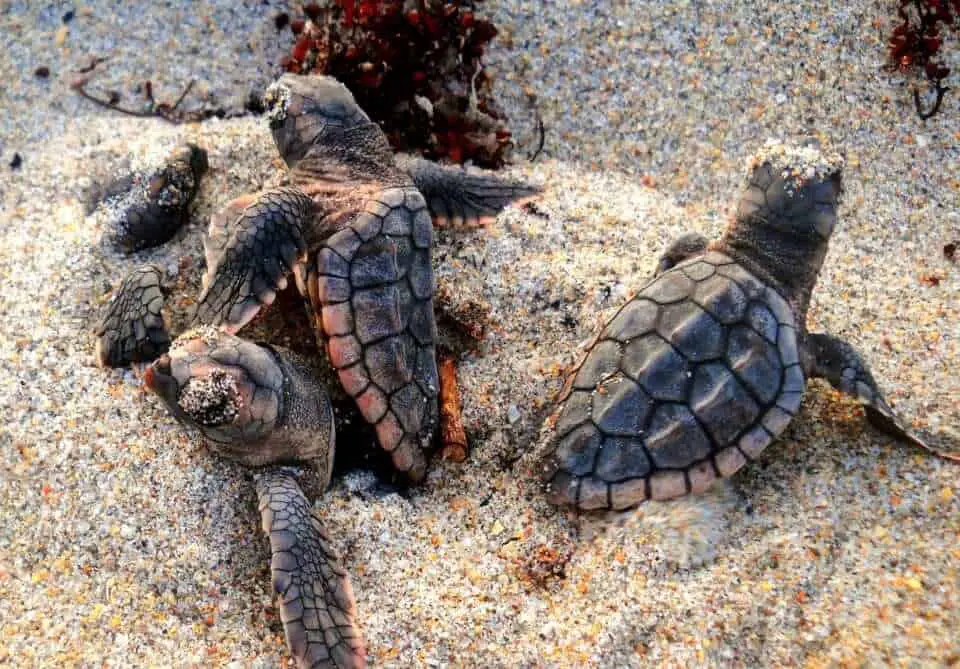
Find out where to experience sea turtles nest ethically in Madagascar
Swimming with whale sharks in Oslob vs Donsol, Philippines
By Campbell and Alya from Stingy Nomads
As a dive instructor, travel blogger, and freediver I have spent a lot of time traveling around the world, exploring sites famous for various amazing marine animals. I have seen whale sharks before and when more than one traveler told me they saw ten animals in one dive snorkeling with whale sharks in the Philippines it moved to the top of my bucket list.
The first place we went swimming with whale sharks was Oslob in Cebu, I knew that they were feeding the whale sharks over here and read some bad reviews, but the experience was much worse than I expected.
About 15 small boats packed with tourists rowed the 50 meters off-shore to a row of buoys to which all the boats anchored and the captains started throwing out a chum line of food for the whale sharks. There were 5 or 6 sharks just hanging vertically in the water, mouths open being fed krill (uyap) by the boat captains.
The sharks were not swimming as they do in the wild and everybody was just hanging around these beautiful animals taking selfies. We should have done better research before going to Oslob.
How to swim with whale sharks in an ethical way
After reading more on the impact swimming with whale sharks had on the animals there, we went to Donsol in the Sorsogon region on South Luzon, this time doing more research.
Donsol is a center of sustainable whale shark tourism which doesn’t allow feeding of the whale sharks. There are strict rules for swimming with the animals.
Our experience in Donsol was much more enjoyable, it took 3 days to find one shark to swim with and we did not have much time with it, but it was still more enjoyable seeing the animal in the wild than in the artificial conditions created in Oslob.
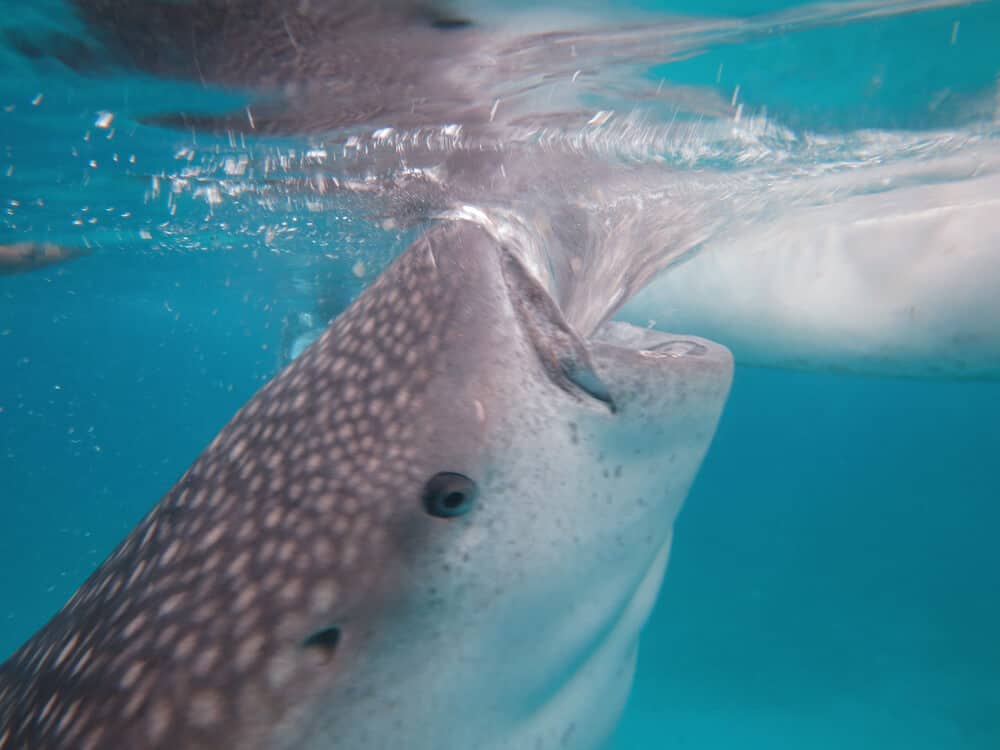
Seeing captured sharks and turtles in Vanuatu
By Eloise from My Favourite Escapes
We had a change in our itinerary at the last minute when visiting Vanuatu. We ended up with extra time in Port Vila and asked the tourist information center for recommendations. As we love animals, they recommended going to Turtle Bay to see turtles and sharks. They confirmed we could snorkel, so we got super excited and quickly jumped in a cab to get there.
When we arrived, we couldn’t access the bay without paying to enter a turtle sanctuary. I hesitated. I always want to research activities that involve animals. But I had no internet network to check what this sanctuary was about.
When we asked about the snorkeling that the information center mentioned, they said we’d get access to the beach to snorkel. It’s not rare to have to pay to access places in Vanuatu. With all the developments happening, it’s sometimes the best way to preserve the land and provide revenue from tourism for the villages. So, we paid the entrance fee.
Then, the bad surprises started.
We found adult turtles kept inside concrete walls being fed and pet by a group of tourists. That’s where we could snorkel if we wanted to. Baby turtles were kept in boxes, higher up the beach.
Shocked, we passed and asked about the sharks. We had to walk up the river to see them. They were also between small concrete walls. We left feeling sad and ashamed that we participated in torturing these animals by financing it. And we felt even more desperate seeing how the other visitors were enjoying it, not knowing how bad it was for the poor animals. I wished I had stuck to my rule not to enter sanctuaries without research.
Ways to see turtles and sharks ethically
No feeding and no touching is the golden rule for ethical wildlife animal encounters.
There is no better way to see turtles and sharks than in their natural environment. The idea that comes first in mind for these marine animals is snorkeling and scuba diving. There are many places in Vanuatu, and in the world, to snorkel and scuba dive to see sharks and turtles.
But for those who aren’t adventurous enough, these other options in the wild don’t involve getting wet.
In New Caledonia, the neighbors of Vanuatu, we joined a walk along the beach and spotted the resident sharks. Another day, we joined a boat trip and saw sharks and turtles.
Not too far, Australia has excellent ethical experiences to see sharks and turtles. The ECO Certification helps travelers to recognize the operators that take measures to protect wildlife.
My best encounters staying dry were on Heron Island, in the south of the Great Barrier Reef. We could see a shark nursery from the beach, and turtles came to the beach to lay their eggs in the evening. All visitors had been educated about how to behave to ensure minimal disruption and staff would run tours to supervise guests.
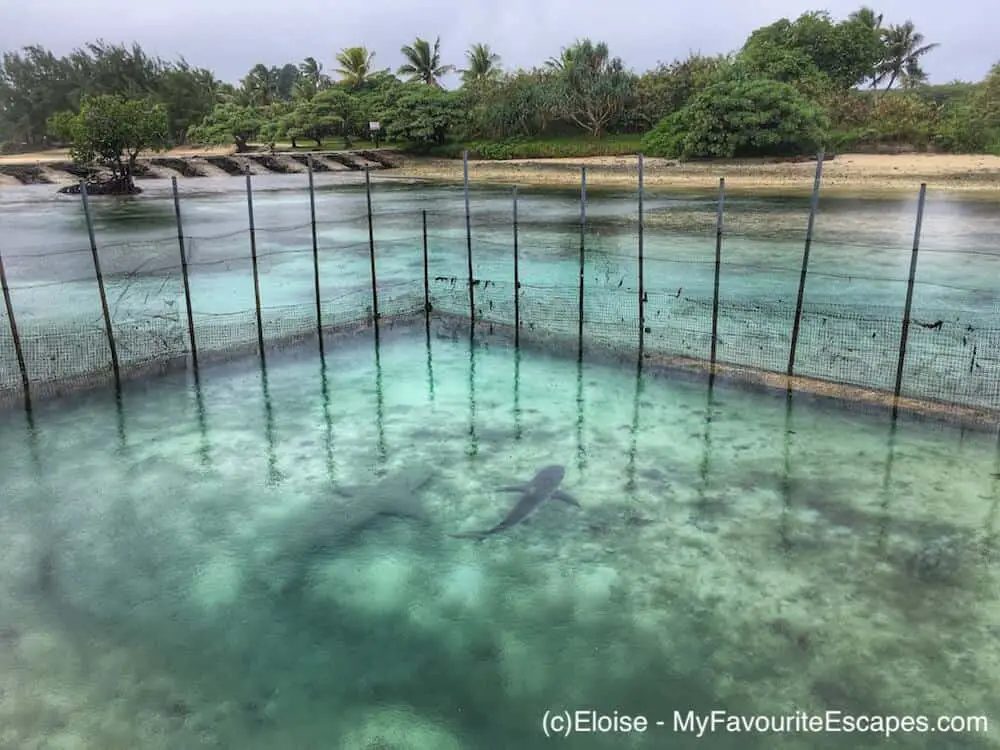
Diving with and feeding stingrays in Stingray City
By Natalie from Blissmersion
Many years ago, I visited Grand Cayman Island. While there, I heard about Stingray City. As a diver, I knew I had to participate in this special opportunity. First, we were briefed on the dive. My buddy and I quickly consulted and decided that he would be the one holding the squid. I didn’t want to touch or feed the rays. After quick safety instructions, we were off to the dive site.
Once we were in the water, the stingrays swarmed the divers. There were rays of all sizes and I had to quickly get over my fear of touching them because they banged right into us. One also gave me an infamous stingray “hickey,” which broke the skin and hurt a lot. It was a really cool experience and also more nerve-wracking than I’d expected. I’d thought the rays would be shy as all of my diving experience to that point had shown that to be true.
It wasn’t until many years later that I realized it wasn’t a good idea to feed the rays. Also, more and more photos have popped up on social media of people kissing stingrays. It made for great photos for the people, but how does this affect the rays?
The quick version is that rays don’t naturally eat squid, so their diet is changed by the presence of this type of tourism. Rays are nocturnal hunters and usually cover vast distances, but the fed rays hover around stingray city during the day. This leads to a lot more rays concentrated in one area.
Diseases can run unchecked and injuries are commonplace for the rays. In fact, the only good thing about an attraction like Stingray City is that it removed the fear of rays. People used to think they were man killers.
Ethical ways to see stingrays
Instead of diving at Stingray City, consider taking a diving or snorkeling tour that doesn’t feed the stingrays. You will still see the beauty of the underwater world. Plus, you’ll be following the rules of diving: don’t touch, feed, or disturb the wildlife. It is admittedly difficult to find a snorkel tour that doesn’t include Stingray City.
Check around with the various dive operators on the island. While there, I dove several days and we only went to Stingray City once. Be clear that you do not want to participate in or support the feeding or touching the wildlife.
By using your tourist dollars wisely, you’ll send a message that there is a need for ethical animal tourism. More companies will jump on board and we will stop seeing photos of bathing suit-clad tourists happily kissing a stingray. It will also help prevent injuries to humans and rays.
The rays seem likely to be able to adapt to their normal behavior, as they’ve been seen foraging when humans aren’t present. Observing them as they naturally act is beautiful. It is lovely to see them fly through the water. You can’t observe that while being swarmed by hungry stingrays who want an easy meal.
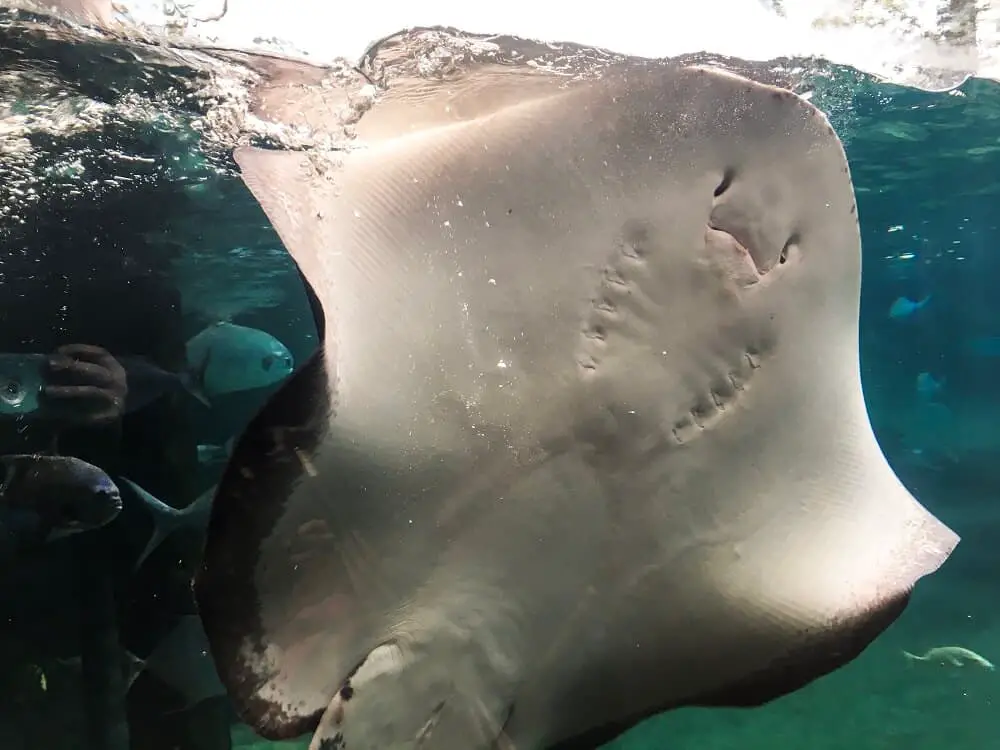
READ NEXT: Unethical animal tourism and what to do instead: Land animals and birds
Conclusion
There are plenty of ethical ways to discover marine life, so there is no need to attend these unethical attractions.
Here in the south of the Iberian Peninsula (Spain and Portugal), there are a lot of possibilities to see dolphins and different whales on dedicated whale and dolphin safaris by boat. In an ethical way. Yet, the Algarve coast has a Zoo Marine that promotes swimming with dolphins in a pool.
Still, with knowledge, there are some unethical activities that are harder to spot than others, so I really hope this read has given you some inspiration to check twice before attending any form of activity including marine life.
It is important for the planet, for the remaining wildlife, and also for assuring that coming generations can have the chance to experience these incredible species in the wild.
A good thing is that more and more green tourism destinations have started to focus more on education about ethical animal tourism.
Pin it for later!
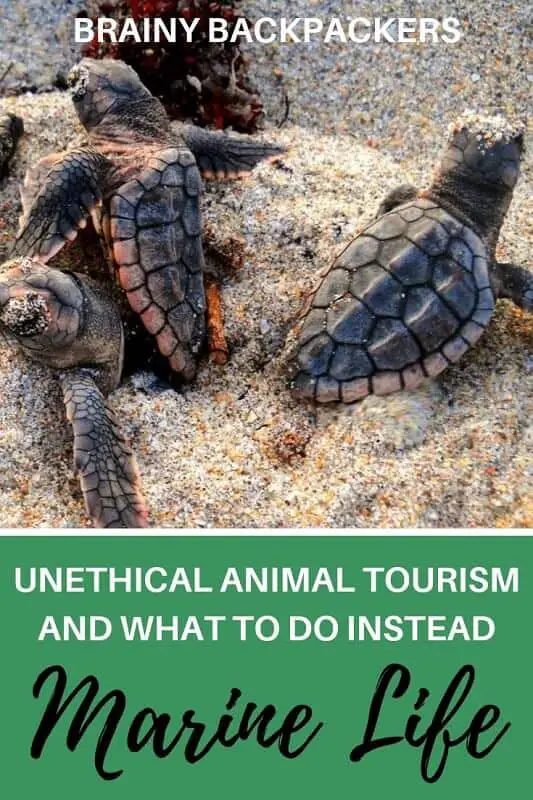

I love how many alternatives you provided here. I swam with dolphins a few years ago as part of a cruise excursion but have since wished I would not have done that.
Hi Emily, thanks for reading! I was about to go swimming with dolphins too in Australia many years ago, but they were sold out. Today I am glad they were so I don’t have that on my list too over unethical animal encounters. But as long as we learn, it’s one positive thing coming out of the experience.